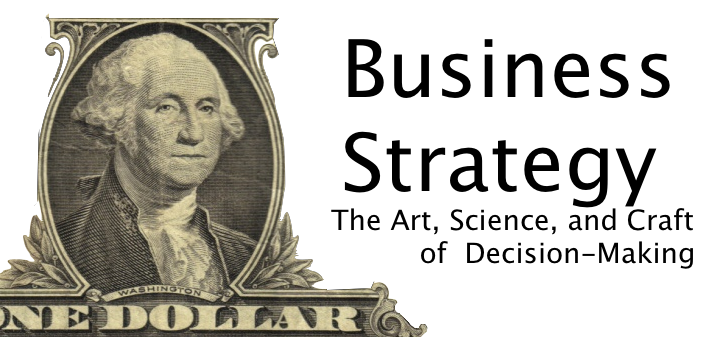Business Model and Business Strategy: Telling a story using VARS framework
Questions addressed by this article:
- What is the difference between business model and business strategy?
- What is the VARS framework?
- Examples of Business Model & Business Strategy?
- What is Walmart's Business Model and Business Strategy?
- What did Euro Disney's Business Model and Business Strategy fail?
Of all the frame-works that try to define what a business model is, VARS as defined by Professor Deepak Somaya at UIUC, is one I find to provide somewhat of a comprehensive view to make sense of it. Also, what I like about VARS is that it allows one to craft the whole story vs certain pieces of it. VARS is defined as:
V = Value proposition.
A = Activities (inclusive of capabilities and resources).
R = Realized Value.
S = Scope of the firm.
Does it have to be in this order, may be not, as Value proposition should talk about creating value, segment and realized value, but if you fall short there, then others will force you pick the slack. Here are a couple of examples where VARS frameworks can be seen in action.
Wal-Mart: The example of Wal-Mart best describes the distinction between business model and strategy. The discount-retailing business model entailed cutting costs, thereby lowering prices for the self-serving customers. This business model took shape in the 1930’s and was utilized in the 1960’s by Sam Walton, around three decades later. The strategy employed by Sam Walton is what differentiated his offerings than his competitors. Instead of focusing on the large metropolitans, Sam Walton focused on small towns, where the consumer needs still existed, but difficult of the any other competitor to penetrate and stay profitable. He also ensured to deliver national brands without relying on special price promotion…etc. This was accomplished by streamlining almost every aspect of operations.
✔ V: Cost Leadership, self serving customers accessible to all.
✔ A: World class logistics, though a phenomenal value network.
✔ R: High margins through economies of scale.
✔ S: Retail Industry
Read - 4 steps to Start a Successful Entrepreneurship journeyEuro Disney: Used the same business model as Disney’s U.S parks. The assumption was the Europeans would follow the same pattern as their American counterparts. The narrative made sense, but did not pass the numbers tests as Europeans were accustomed to eating lunch and dinner at the appropriate hours, which overloaded the facilities and created customer dissatisfaction. Only once Disney made the appropriate changes, did the narrative and numbers tests passed for EuroDisney.
✖ V: Missed.
✔ A:Tacit Knowledge available to function an amusement part.
✔ R: Expansion (Globalization is something I'll cover in subsequent blogs).
✔ S: Entertainment Industry.
From a practical applications perspective, a novel idea does not automatically translate into a viable business, unless it is able to describe the value, target segment and price points. Once in place, the differentiation factor i.e competitive strategy will ensure success in the market place.
Read: 9 business models to capture the big opportunityRef: https://hbr.org/2002/05/why-business-models-matter
Ref: Ketchen, D., & Short, J. (2011). Chapter 2 Leading Strategically (except sections 2.3, 2.4 and 2.5). Mastering Strategic Management. Retrieved from: http://www.saylor.org/site/textbooks/Mastering%20Strategic%20Management.pdf


10 Comments
ReplyDeleteThe blogs are really appreciable and one can trust the knowledge and information provided in the writing. The article you do produce on a weekly base really the best. I have found a similar websitebusiness strategy visit the site to know more about Omdata.
Thank you and welcome. Help us spread the word so we can continue this great work!
DeleteI just got to this amazing site not long ago. I was actually captured with the piece of resources you have got here. Big thumbs up for making such wonderful blog page! News Update
ReplyDeleteThanks you and Welcome to the Business democratizing community. Spread the word!
DeleteI personally like your post; you have shared good insights and experiences. Keep it up. https://givetime.io/
ReplyDeleteThanks you and Welcome to the Business democratizing community. Spread the word!
Deletei really appreciate your work on business strategy.
ReplyDeleteGlad I found this article about virtual assistant. Keep writing
ReplyDeletehelpful articles like this one. I'll definitely visit this blog
to read more.
This looks 👌. A human wrote this 😳
ReplyDeleteSo clear
ReplyDelete